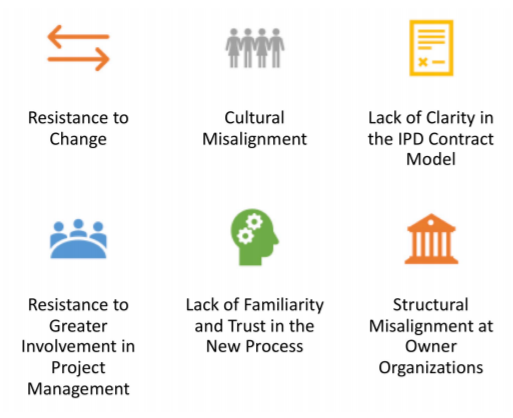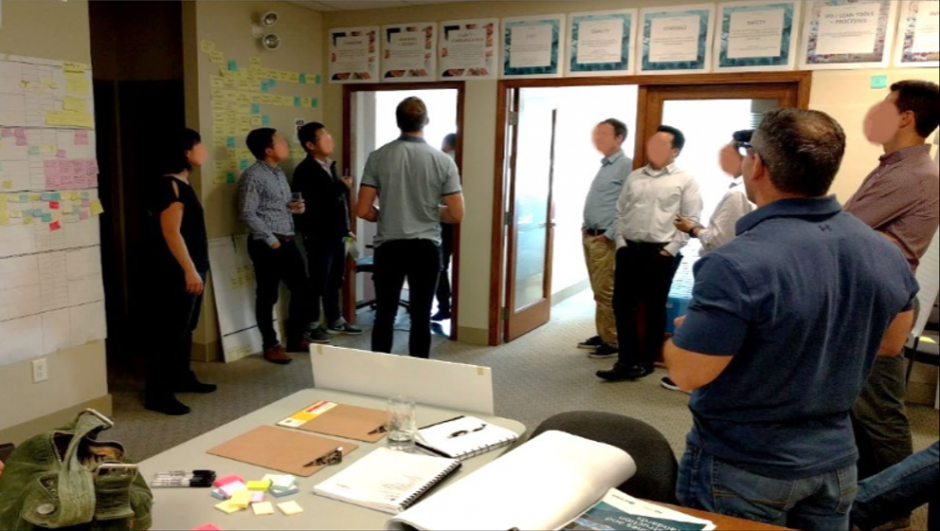Integrated and collaborative practices in BIM are essential for improving efficiency and outcomes in construction projects. By fostering better communication and cooperation among stakeholders, these practices help to minimize errors and enhance project delivery. We are interested in challenges to IPD implementation, and the impacts of the IPD environment on technology, organization, processes and project outcomes.
Relevant Reports
- Efficiency & Waste Reduction: IPD integrates people, systems, and practices through collaboration.
- Key Barriers: Resistance to change, cultural misalignment, unclear contracts, increased owner involvement, unfamiliarity, and structural misalignment.
- Real vs. Perceived Barriers: Barriers vary in importance and are not universal to all organizations.
- Solutions: Education, training, customizable templates, and case studies to support owners.
- Encouraging Adoption: Public policies, incentives, and an IPD credentialing system promote wider acceptance.


- Metrics and Success Indicators: Traditional success metrics like budget and schedule are less reliable; focus on team effectiveness and Lean practices proves more indicative of successful project delivery.
- Recommendations for Adoption: To facilitate the adoption of IPD and Lean practices, resources such as training sessions, case studies, and technical guides are essential, alongside incentives and supportive policies.
Recent Academic Publications
- Governing Integrated Project Delivery as a Common Pool Resource Scenario: What Management Practices and Impact on Project Participants?
- Understanding the impact of BIM on collaboration: a Canadian case study
- Collaboration through innovation: implications for expertise in the AEC sector


- Case Study Comparison: Various projects were analyzed using Lean Construction tools, showcasing successful implementation and effective collaboration across teams.
- Lean Tools and Processes: The truth table highlights the use of validation, co-location, and lean team formation as critical components for project success.
- Team Culture and Collaboration: High engagement and a positive team culture were strongly correlated with successful project outcomes, emphasizing the importance of communication and effective collaboration.
Integrated and collaborative practices in BIM are essential for transforming construction project outcomes. By fostering better communication and cooperation among stakeholders, these practices help minimize errors and enhance project delivery.
Addressing the challenges to IPD implementation and understanding its impacts on technology, organization, processes, and project outcomes will pave the way for more efficient and successful projects. The research and reports highlighted on this page provide valuable insights and practical solutions to support the adoption and effectiveness of integrated project delivery methods.
